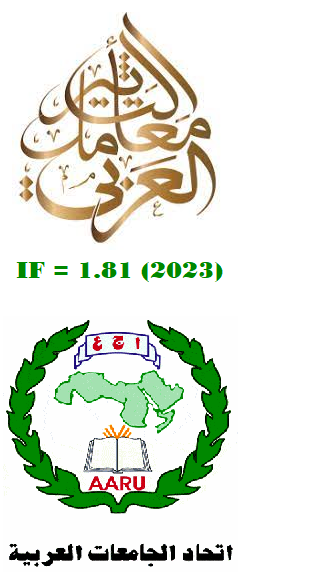Consumers Loyalty Indicator as a Drivers for Satisfaction
Abstract
This study focuses on understanding the leading indicators of loyalty among food and nourishments shoppers in two Syrian Malls, Cham City Centre and Massa Plaza, both located in Damascus, the capital of Syria. The research uses descriptive approach; the data were collected from a questionnaire distributed to 110 shoppers in the two shopping malls, 100 valid responses divided (50 answers from Cham City Centre, and 50 from Massa Plaza Mall). The data were analyzed using Statistical Package for Social Science to test the hypothesis. The result showed that shopper attitudes toward the store positively related to his fulfilment and loyalty. Also, shoppers call to the store is an indicator of his satisfaction and commitment towards the store. Finally, perceived value is positively related to the four loyalty indicators. The novelty of this article comes from the analysis of the four loyalty indicators as an essential factor for the sustainable customer. Loyal customers are free marketing tools that keep business running and can increase market share.
Downloads
References
Burton, S., & Netemeyer, R. G. (1992). The effect of enduring, situational, and response involvement on preference stability in the context of voting behaviour. Psychology and Marketing, 9, 143-156.
Celsi, R. L., & Olson, J. C. (1988). The role of involvement in attention and comprehension processes. Journal of Consumer Research, 14, 210-224.
Dick, A. S., & Basu, K. (1994). Customer loyalty: Toward an integrated conceptual framework. Journal of Marketing Science, 22(2), 99-113.
East, R., Harris, P., Wilson, G., Lomax, W., & Perkins, D. (1997). First-Store Loyalty to US and British Supermarkets. Vol. 1. (pp. 401-415). Warwick: Proceedings of the 26th European Marketing Academy Conference.
Esaki, K. (2013). Prediction models for total customer satisfaction based on the ISO/IEC9126 system quality model. American Journal of Operations Research, 3(4), 393-401.
Farris, P., Bendle, N., Pfeifer, P., & Reibstein, F. (2010). Marketing Metrics: The Definitive Guide to Measuring Marketing Performance. Upper Saddle River, New Jersey: Pearson.
Flynn, L. R., & Goldsmith, R. E. (1993). Application of the personal involvement inventory in marketing. Psychology and Marketing, 10, 357-366.
Gilly, M. C., & Zeithaml, V. A. (1985). The elderly consumer and adoption of technologies. Journal of Consumer Research, 12, 253-357.
Goodman, J. A. (2009). Strategy Customer Service: Managing the Customer Experience to Increase Positive Word of Mouth, Build Loyalty and Maximize Profit. New York: AMACOM.
Han, H., Kim, Y., & Kim, E. (2011). Cognitive, affective, conative, and action loyalty. International Journal of Hospitality, 30(1), 1008-1019.
Harris, L. C., & Goode, M. M. H. (2004). The four levels of loyalty and the pivotal role of trust a study of online service dynamics. Journal of Retailing, 80, 139-158.
Harvey, H. (2017). Types of Consumer Loyalty. Chicago, Illinois: American Marketing Association. Available from: https://www.bizfluent.com/info-8208520-types-consumer-loyalty.html. [Last accessed on 2020 Jan 06].
Homburg, C., & Giering, A. (2001). Personal characteristics as moderators of the relationship between customer satisfaction and loyalty an empirical analysis. Psychology and Marketing, 18, 43-66.
Howard, J. A. (1994). Buyer Behaviour in Marketing Strategy. New Jersey: Prentice Hall.
Keiningham, A. L., Buoye, A., & Williams, L. (2009). Loyal customer isn’t always profitable. Wall Street Journal, 22, 1-5.
Kotler, P., & Keller, K. (2006). Marketing Management. 20th ed. New Jersey: Prentice Hall.
Massoudi, A. (2018). Essentials of International Management. Germany: Noor Publishing.
Massoudi, A., & Slahaddin, S. (2017). The Consequences of work environment on employees productivity. Journal of Business and Management, 19(1), 35-42.
Mittal, B. (1995). A comparative analysis of four scale of consumer involvement. Psychology and Marketing, 12, 663-682.
Oliver, R. L. (1999). Whence customer loyalty? Journal of Marketing, 63, 33-44.
Oliver, R. L. (1997). Satisfaction: A Behavioural Perspective on the Consumer. New York: McGraw-Hill.
Rai, A. K. (2008). Customer Relationship Management: Concepts and Cases. New Delhi: PHI Learning.
Reichheld, F. F., Markey, R. G., & Hopton, C. (2000). The loyalty effect: The relationship between loyalty and profits. European Business Journal, 12(3), 134-139.
Reinartz, W. J., & Kumar, V. (2000). On the profitability of long-life customers in a non-contractual setting: An empirical investigation and implications for marketing. Journal of Marketing, 64, 17-35.
Walsh, G., Evanschitzky, H., & Wunderlich, M. (2008). Identification and analysis of moderator variables: Investigating the customer satisfaction-loyalty link. European Journal of Marketing, 10(1), 125-136.
William, P., & Nauman, E. (2011). Customer satisfaction and business performance. Journal of Service Marketing, 25(1), 20-32.
Copyright (c) 2020 Aram Hanna Massoudi

This work is licensed under a Creative Commons Attribution-NonCommercial-NoDerivatives 4.0 International License.
Authors who publish with this journal agree to the following terms:
1. Authors retain copyright and grant the journal right of first publication with the work simultaneously licensed under a Creative Commons Attribution License [CC BY-NC-ND 4.0] that allows others to share the work with an acknowledgment of the work's authorship and initial publication in this journal.
2. Authors are able to enter into separate, additional contractual arrangements for the non-exclusive distribution of the journal's published version of the work (e.g., post it to an institutional repository or publish it in a book), with an acknowledgment of its initial publication in this journal.
3. Authors are permitted and encouraged to post their work online (e.g., in institutional repositories or on their website) prior to and during the submission process, as it can lead to productive exchanges, as well as earlier and greater citation of published work (See The Effect of Open Access).









